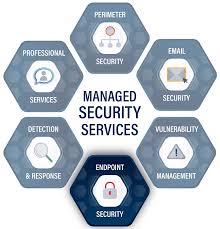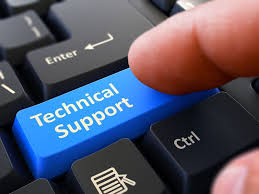In today’s tech-first environment, businesses across the United States are under pressure to stay connected, secure, and scalable managed it support— without breaking the bank. Whether you’re a startup building momentum or an enterprise managing complex operations, the question is clear:
Should you invest in an internal IT team or partner with a Managed IT Support provider?
In this article, we’ll break down the pros and cons of Managed IT Support vs In-House IT, looking at cost, scalability, security, performance, and the needs of a modern U.S. business. Let’s dive in.
What’s the Real Difference Between Managed IT Support and In-House IT?
In-House IT Teams
In-house IT involves hiring full-time employees who work on-site and handle everything from software installations to network security. This traditional model offers hands-on control and presence — but it also comes with high fixed costs.
Managed IT Support (MSP)
With Managed IT Support, you outsource your IT operations to an external provider. These experts monitor, maintain, and protect your infrastructure 24/7 — either remotely or via on-site visits when needed — for a predictable monthly fee.
Side-by-Side Comparison: Managed IT Support vs In-House IT
| Feature | Managed IT Support | In-House IT |
| Cost | Fixed monthly cost, no surprises | High salaries, hardware, benefits |
| Expertise | Team of specialists, certifications included | Limited to staff skills |
| Availability | 24/7/365 proactive support | Business hours only |
| Security | Includes cybersecurity and compliance tools | May lack advanced defenses |
| Scalability | Easy to expand services | Hiring + infrastructure needed |
| Tech Access | Latest tools and updates | Often limited by budget |
| Downtime Response | Immediate remote response | Slower after-hours fixes |
| Focus | Lets team focus on core business | Leaders distracted by IT issues |
Cost: Predictability vs Long-Term Overhead
One of the biggest benefits of Managed IT Support is budget control. You pay a flat monthly rate covering all essential services — including remote support, monitoring, updates, and cybersecurity.
In contrast, In-House IT teams come with long-term financial commitments:
- Employee salaries and benefits
- Recruitment and training
- Hardware and software licensing
- Emergency overtime and downtime costs
🧠 USA Tip: For SMBs and startups, managed support is the most cost-efficient way to scale tech operations.
Security & Compliance: Who Keeps You Safer in 2025?
Managed Support Teams Come Prepared
From HIPAA to CCPA, U.S. companies must now meet tougher compliance and data privacy laws. Managed Service Providers offer:
- Regular vulnerability assessments
- 24/7 threat monitoring
- Cloud security and firewalls
- Data encryption and secure backups
In-House May Struggle to Keep Up
Unless your internal IT staff is trained in cybersecurity and compliance, your business may fall behind or be exposed to attacks. In 2025, one breach could cost a business millions — or worse, customer trust.
Availability & Response Time
Managed IT Support means:
- 24/7/365 help desk
- Remote troubleshooting within minutes
- Automated alerts before issues escalate
In-house teams typically operate within regular hours. That means late-night outages or holiday issues go unresolved unless you’re a large company running full shifts.
USA Tip: For companies with remote or hybrid teams across time zones, round-the-clock coverage is critical.
Scalability: Grow Without Limits
With Managed IT, expanding is easy:
- Need 10 new laptops? They ship pre-configured.
- Opening a new branch? They handle setup remotely.
- Scaling cloud storage? Done in hours, not weeks.
In-house teams require:
- New hires
- Bigger budgets
- Weeks of onboarding and hardware purchases
Conclusion? MSPs offer speed and flexibility that internal teams can’t match.
Control vs Convenience: What’s Best for You?
Some companies prefer the control of an internal IT team — especially in sectors with high confidentiality or proprietary systems.
But Managed IT Support doesn’t mean giving up control. Reputable providers:
- Offer full transparency
- Provide detailed reporting
- Customize services to your needs
It’s about shared responsibility — you keep ownership while experts handle execution.
Who Should Choose Managed IT Support in 2025?
- Startups and small businesses with limited budgets
- Remote-first or hybrid companies
- Firms in healthcare, finance, or legal (for compliance)
- Fast-scaling companies with changing tech needs
Who Might Still Choose In-House IT?
- Enterprises with complex or legacy systems
- Government agencies with strict data control policies
- Organizations requiring on-site-only support
Final Verdict: Managed IT Support vs In-House IT
While both models serve a purpose, Managed IT Support is the smarter, more flexible option for 80% of U.S.-based companies in 2025.
It combines expert-level service, cost control, and 24/7 availability — all without the HR burden or high capital costs.
Want the best of both worlds? Consider a hybrid model — internal staff for daily needs, and a Managed Service Provider for security, compliance, and advanced support.
FAQs: Managed IT Support vs In-House IT (USA Edition)
Q1: What is the biggest advantage of Managed IT Support?
24/7 expert support, predictable pricing, and enterprise-grade cybersecurity make it ideal for small to midsize businesses.
Q2: Is Managed IT Support safe for data compliance in the U.S.?
Yes. Reputable providers include HIPAA, CCPA, and SOC 2 compliance management in their services.
Q3: Will I lose control over my systems with Managed IT?
No. You remain the owner of your infrastructure. MSPs act as your support team, not your replacement.
Q4: Can I use both Managed IT and In-House IT together?
Absolutely. Many U.S. companies now use a hybrid model — in-house teams for physical needs and MSPs for remote security and cloud support.
Take the Next Step with Remote Expert Solutions
At Remote Expert Solutions, we help American businesses like yours scale securely and affordably. Managed IT Support includes:
- 24/7 U.S.-based help desk
- Cloud migration and security
- Full compliance management
- Business continuity and disaster recovery
Let’s talk. Book a free 15-minute consultation and discover why Managed IT is the future for growing businesses in 2025.
👉 Contact Us
Admin@remotexpertsolutions.com






